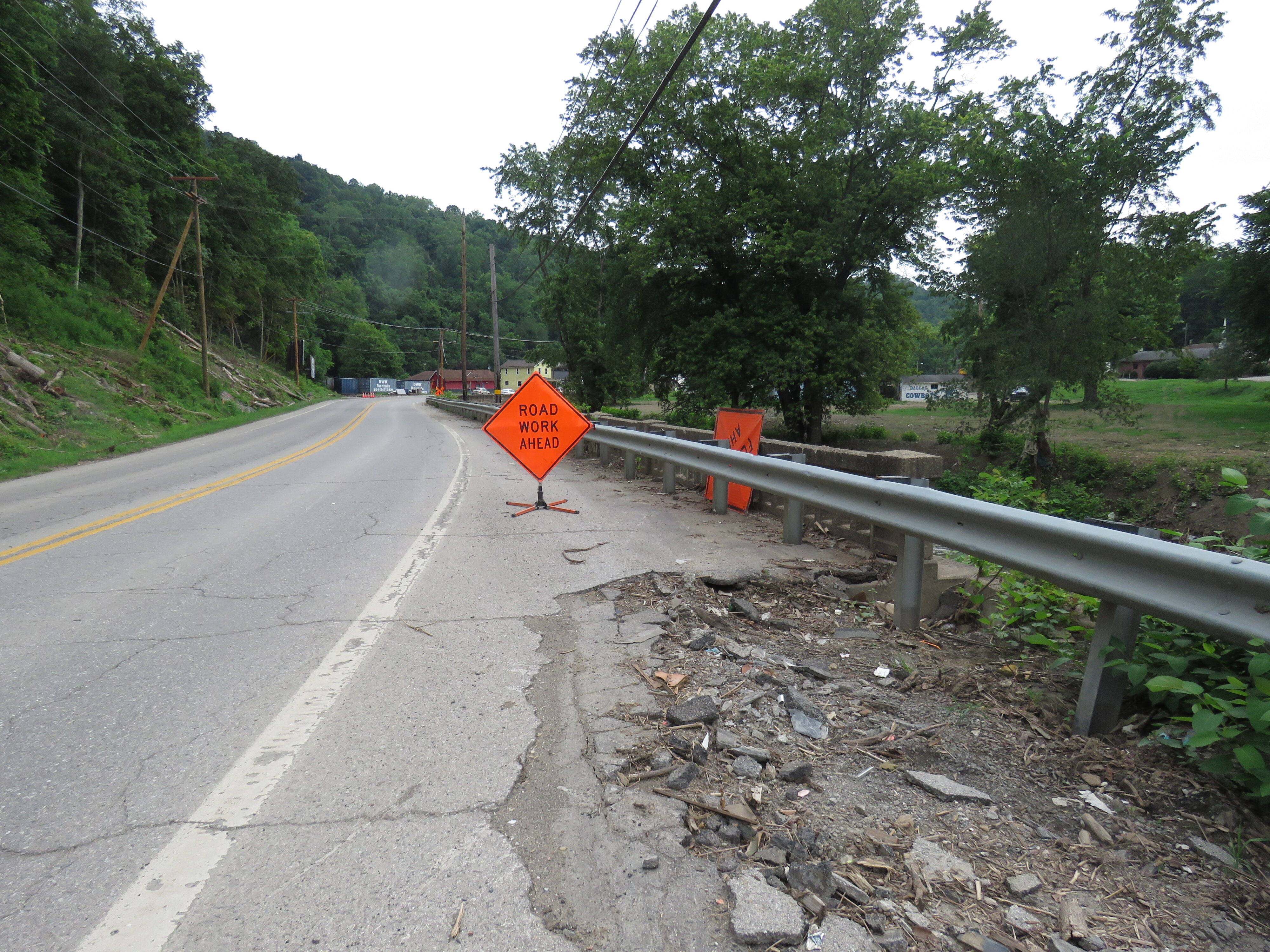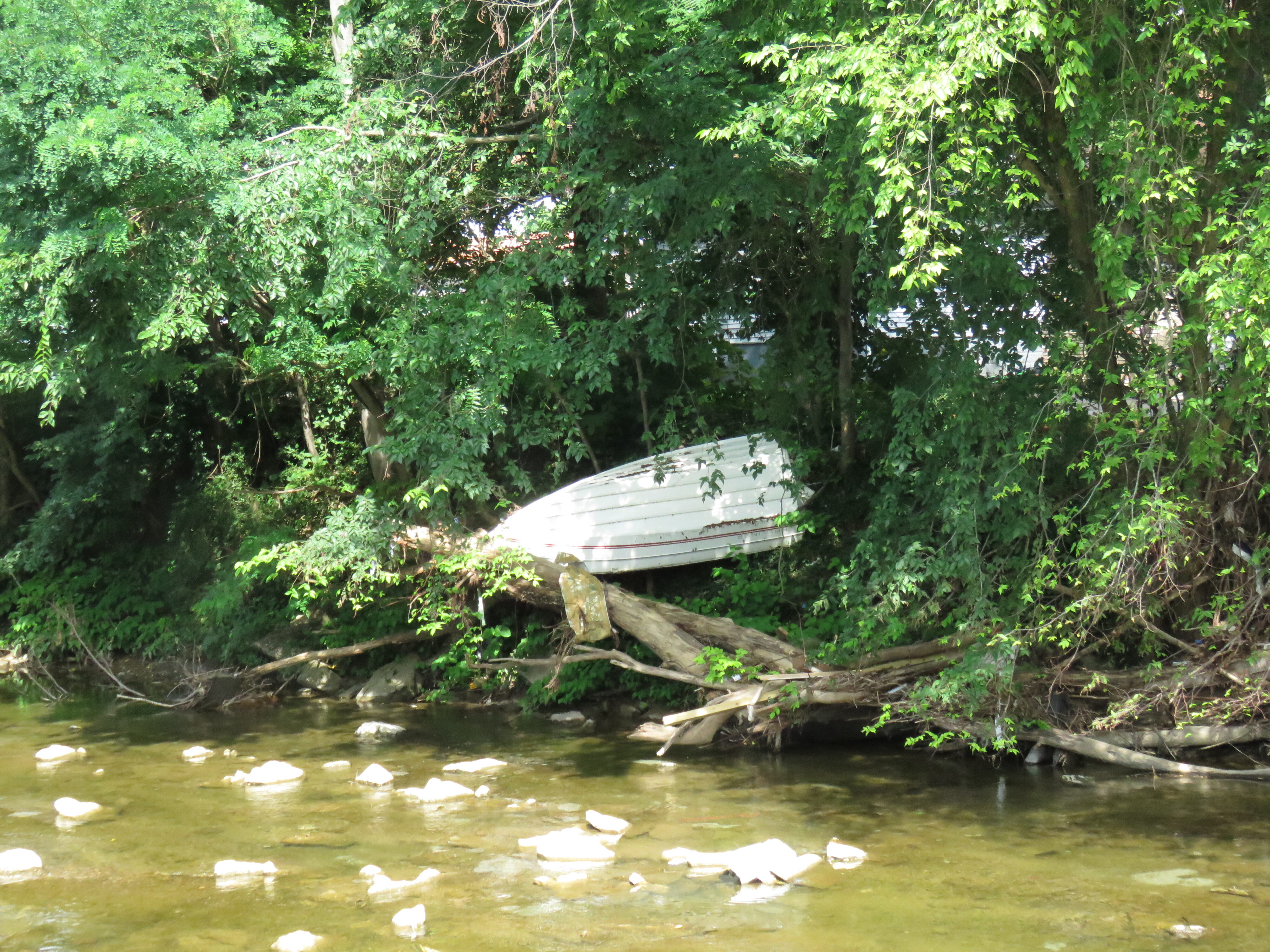
Towne Moores

Towne Moores
This story was originally published in the Old Gold and Black on September 4, 2025.
On Saturday, June 14, Ohio County in the West Virginia Northern Panhandle experienced devastating floods. The rain fell quickly, with 4 inches of rain accumulating within 30 minutes. Nine people were killed and at least 100 homes were damaged.
“We got the alert at 8:45, seconds before she yelled, ‘Logan, there is a car floating down the creek,’” Logan Pickens, a resident of Triadelphia, W. Va., said, describing the moment he and his wife Jenna realized they were in real danger.
After the West Virginia floods, it took over a month for President Donald J. Trump to approve a Major Disaster Declaration and an Emergency Declaration for Ohio County, leaving residents at a standstill amongst the rubble that was once their home.
This is not the first time Trump has deserted a state amidst destruction. Last September, Hurricane Helene hit North Carolina, killing dozens of people.
In late May, the Trump administration denied North Carolina’s request to reimburse 100% of the state funds used for aid caused by Hurricane Helene. According to ABC, a statement from North Carolina Gov. Josh Stein said, “The denial will cost state residents ‘hundreds of millions of dollars.’”
Unfortunately, the neglect experienced at the hands of the Trump administration is no surprise, as he continues to deny federal disaster aid across the country.
The aftermath of the storm in Ohio County remains tragic.
Sunday morning sunlight revealed the total damage that was not visible through the pouring rain and dark night sky. Skeletons of where homes once stood, their wooden bones scattered on the swampy ground. The insides of buildings had become the outsides, with washing machines resting on the hoods of cars and shower curtains hanging from trees.

I remember driving my sister and I to get a free tetanus shot after helping a family friend clean out her flooded basement. The water was up to our waists. Unable to see anything, we reached aimlessly for possessions, unable to identify them as they were covered in mud.
We drove past Big Wheeling Creek, observing the firemen wading in the water. “Oh my god,” my sister said. “That fireman is throwing up on the bank. Do you think he found a body?”
Entire roads had caved into the creek, the exact body of water that had engulfed them the night before. As we drove by, we watched kids in muck boots hang off the backs of four wheelers, riding over the rubble. Others made their way by foot, carefully trekking through the mud with buckets and shovels in hand.
No one really spoke to each other. The destruction was loud enough.

The first sign of potential flooding was at 3:40 p.m. on Saturday, June 14, when the National Weather Service predicted “scattered areas of flash flooding expected going through this evening.” At 8:06 p.m., another flash flood warning was sent out.
Jeff Oechslein, a meteorologist for WTOV9, a local news station, explained that the exact location of potential flooding could not be determined because thunderstorms were so small-scale.
However, flood maps, which are managed by the Federal Emergency Management Agency, are created as a tool to show which areas within a community are prone to flooding.
As explained on FEMA’s official website, “The mapping process helps you and your community understand your flood risk and make more informed decisions about how to reduce or manage your risk.”
According to the National Flood Insurance Reform Act of 1994, under Section 575, flood maps should be updated once every five years. The flood maps for Wheeling, Triadelphia, Elm Grove, and Valley Grove, W. Va., have not been updated since June 2006, over 19 years ago.
Outdated maps may not accurately represent the level of flood risk for an area, leaving people who are likely to experience flooding without an understanding of their risk and without flood insurance, West Virginia University Associate Professor of Geography Aaron Maxwell explained.
“FEMA flood maps don’t account for climate change,” Dr. Jamie Shinn, Maxwell’s colleague and an assistant professor in the Department of Environmental Studies at the State University of New York, said.
Shinn believes climate change has contributed to the floods that have continued to strike the nation this summer. She is well aware of the landscape and climate of West Virginia and surrounding areas, as she is a part of the research team that helped to develop the West Virginia Flood Resiliency Framework and was formerly an Assistant Professor of Geology and Geography at WVU.
“We know the increased intensity of rainfall from climate change is increasing storms and floods,” Dr. Shinn said.
As climate change increases the frequency and danger of natural disasters, Trump continues to make cuts to climate change research and FEMA flood mitigation programs, which a state like West Virginia relies on.
The West Virginia Flood Resiliency Trust Fund has no money, as a proposal to allot $50 million to flood relief assistance was rejected by the West Virginia House of Delegates in April. This means the area can only make a full recovery from the flood with aid from FEMA.
The radio silence from the president following the flooding and destruction of their homes left many West Virginians wondering: Where is FEMA? And where is Trump?

Patty Templin, a longtime Wheeling resident, was on her front porch calling for her dog when the flood began.
Templin’s entire garage and basement were flooded, destroying her car and many valuables, including clothing that belonged to her late husband, Tim. Along with these items was a “MAGA” hat.
Templin expressed confusion about the lack of flood assistance from FEMA and support from Trump. “He went to Texas,” she said. “He was in Pittsburgh and I thought, ‘Well, if he is in Pittsburgh, why can’t he come here?’ It actually did upset me. It’s like we don’t exist.”
Trump visited Texas on July 11 to view damage left by floods there. The president had not acknowledged West Virginia’s flooding at the time.
“We always thought he would have our backs,” Templin said, referring to her and Tim’s unwavering support for Trump. “We always vote for who we thought would help us. I don’t know if I would vote for him again.”
Logan and Jenna Pickens, who reside in Elm Grove, experienced extreme destruction to their home in the flood that left almost everything destroyed. The couple explained that they each submitted the FEMA survey reporting the damage to their home and items twice.
Jenna Pickens described feeling betrayed by Trump’s inaction to declare the flooding a disaster.
“It felt like he was turning his back on us,” she said.
In contrast to the lack of aid given by federal funding, the Pickenses expressed deep gratitude for the aid and help offered by the residents of Wheeling and the surrounding communities.
“My biggest thing is the community being together,” Jenna Pickens said. “It was very encouraging to have people coming out of the woodwork to donate things to you and volunteer.”
On June 22, 2025, Ohio County received $11.7 million in individual assistance. There has still no allocation of public assistance aid, which would repair public areas like roads and bridges.
Despite the lack of assistance from FEMA and from the federal government as a whole, Triadelphia, W. Va., and countless other towns that have experienced devastating effects from natural disasters persist.
Logan Pickens summed up the unity, history, and resiliency of West Virginia in one simple sentence: “West Virginia has always fought to protect ourselves because no one else has.”